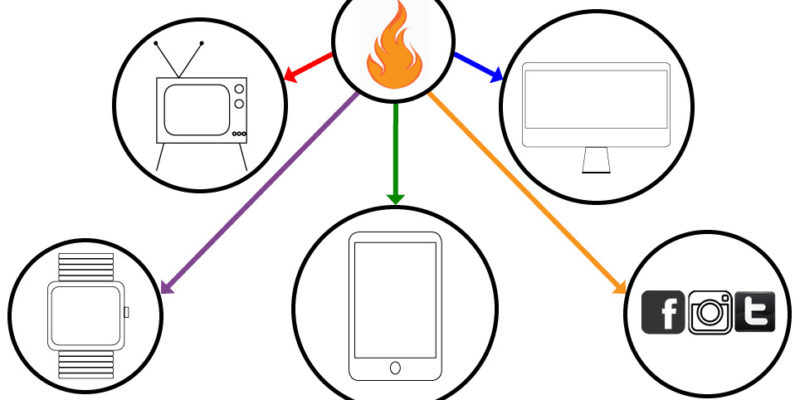This is Part 3 of a series on bringing TV news into the modern age. See Part 1 and Part 2 here.
TV news is TV-focused. A legacy product like the 11 O’Clock news has a lot invested in its brand. And stations get a lot in return from advertisers and viewer loyalty, which has stayed more or less steady over the years, albeit with an older audience. But the way they distribute their content outside of the newscast leaves a lot to be desired. Things are getting better, but that’s mostly on the distribution side. Let’s think about how the content is created.
We’ve got a lot of endpoints to tell the same story. And it shouldn’t take a rocket scientist to tell you that the story should be told in different ways. The TV and the desktop computer can show the video – the computer with context added in. The phone can give you relevant points, including location data, and the watch should remind you that perhaps you’d like to take a different route if you’re nearby.
For starters.
But we also don’t want to make the mistake of building a five-year plan when five years ago we had barely an inkling that people would be using their devices the way they do today. So we need to look to the future at the same time we look at how people are getting information right now.
Some of those answers may be Apple TV and its competitors, at least looking down the road. Others have to do with relying on social media as a partner instead of an endpoint in the distribution chain. The list goes on.
I’m not saying it’s easy. I’m not saying I have all the answers — nor do most of our best thinkers. Yet. But making those distinctions is the first step in attracting viewers that otherwise wouldn’t give the 11 O’Clock news the time of day.
Joel Magalnick is the founder and CEO of The Refined Story, which helps companies with a storehouse of content realize their editorial potential. See Part 1 and Part 2 here.





